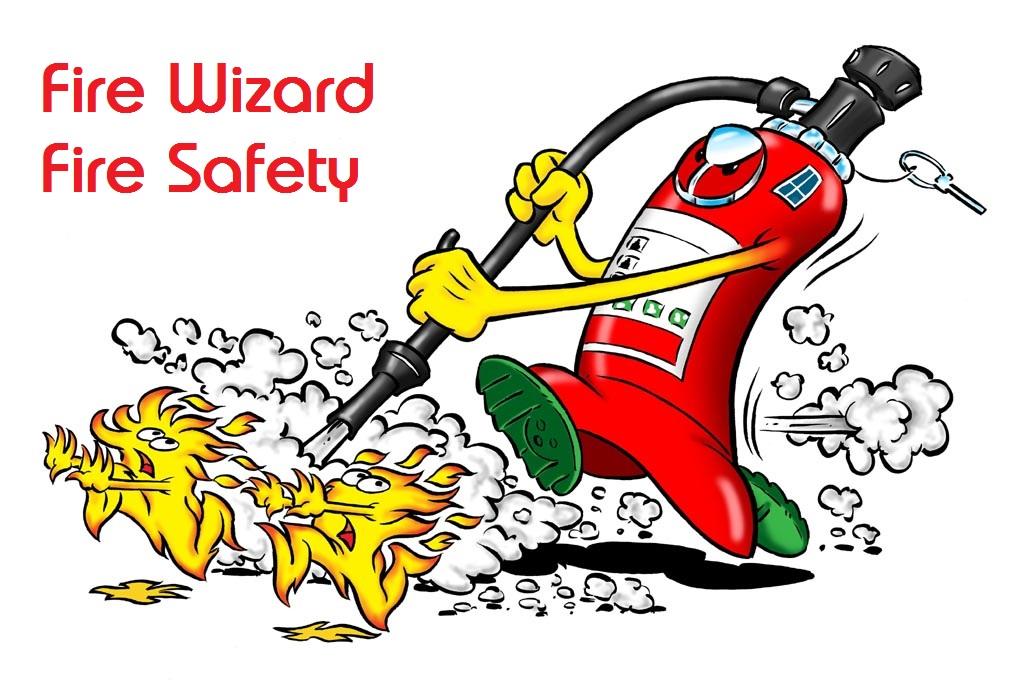-
Posts
2,707 -
Joined
-
Last visited
Everything posted by AnthonyB
-
They should all be fire doors including the other flats. The Management Company should be enforcing this to everyone, not just you.
-
It's not more cost effective for the customer to scrap CO2 at 10 years - there is is still an appreciable price saving on exchanging for an overhauled unit. Suppliers like replacing new as they get the margins on a new sale and unlike other types of extinguisher which they have to pay to legally dispose of they actually can get credit back on old CO2 extinguishers. CO2 extinguishers do not require a 5 year Extended Service and only require annual Basic Services until the 10th year at which point it requires an Overhaul and should be service exchanged. The chances of it being actually an Obsolete Model are extremely remote if it's as recent as you say, unless they are saying it because it's steel bodied, which is completely untrue as well..... If you send me a photo of the extinguisher in question I can give definitive advice: anthony.buck@alcumusgroup.com
-
If your flats are purpose built the current guidance is actually the LGA Guide Fire safety in purpose-built flats: http://www.local.gov.uk/sites/default/files/documents/fire-safety-purpose-built-04b.pdf The sleeping risk guide remains relevant for hotels, boarding houses, etc. First thing you can do is dispense with the communal domestic single station smoke alarms which serve no real purpose and are non compliant anyway.
-
It's a requirement if your fire risk assessment deems it necessary.....
-
Lift control fire alarm interfaces are required in the BS EN for lifts, but it's never been a specific requirement in most fire safety guidance, just a very useful extra.
-
A competent fire risk assessor should be able to specify extinguisher requirements in detail - it's the FRA after all that determines what provision is required. All to often when the extinguisher engineer, whose living is based on supplying extinguishers, is asked a premises often ends up with excessive numbers and inappropriate types, which we then have to get changed and removed. If deciding to use a third party risk assessment provider and they can't specify your requirements related to extinguishers, fire alarm systems, etc then walk away - they shouldn't be doing the job. If the RP is trying to do the FRA in house then there is basic guidance in the Government FRA guides, but for complex risks you either can either use an FRA consultancy for an independent survey or through yourself on the mercy of the extinguisher engineers (who do 'free' surveys, but then claw it back in extinguisher & sign sales)
-
Does the block of flats only have a single direction of escape and a single stair? If so no exit signage is required. Otherwise it should conform with BS5499-4 for positioning and size and of course should include the BS EN ISO 7010 'running man' pictogram in white on green with a suitable white on green directional arrow. See http://www.safelincs.co.uk/fire-escape-route-signs-from-jalite/ as it includes info on sign sizes for different viewing distances
-

Fire Door - need a self-closer?
AnthonyB replied to MysteryMan's topic in Fire Doors and Accessories
The door between house and garage is one of the few places you have to have a self closer, the other being front doors of flats. The requirement to fit is part of Building Regulations - once fitted and approved what happens thereafter is up to the householder in a single private dwelling - you can remove it if you want you aren't subject to fire safety legislation -

Can I use an electric lock release to get in through fire exit?
AnthonyB replied to Lostboyrulz's topic in Fire Exits
As it would be an electromechanical lock there are some restrictions, however if, from your description, the door can be unfastened from the inside just via the panic bolt and not the electrical keep you wish to fit it would be fine. -
Fire engineering in this situation usually means automatic suppression. As an alternative to domestic sprinklers you may find this system easier to fit: http://www.plumis.co.uk/Fire-refurbishment-building-regulations.html Fire engineers can help with this, there are fire engineering companies in their own right as well as fire safety consultancies like ours who have a couple of fire engineers on the books for jobs like this. Some Approved Inspectors (private alternative to going through Council Building Control) have fire engineers available with the advantage they can sort out your Building Regs certificate at the same time, e.g. http://www.approvedinspectorsltd.co.uk/services/fire-engineering/ (not an endorsement, but the fire engineering company they partner with is competent) Make sure who you use is suitably qualified and experienced or you may end up wasting money!
-
There should be no gap for a smoke seal otherwise it fails to perform it's job of stopping cold smoke passage prior to the activation of the intumescent seal underneath.
-
If it's not a hospital there is no need to use the elusive NHS Estates Symbol and just get the more readily available ISO 7010 pictogram, loads of maintained exit boxes with this pictogram available (but check as some suppliers are still trying to offload fittings with the discredited EC pictogram)
-
It's as the above states - If you want to eliminate the science what happens is a CO2 extinguisher maintains an almost constant pressure until there is no more liquid CO2 in the cylinder (when it's just about empty), so even if a pressure gauge was fitted it would still show full even if the extinguisher is almost empty.
-
Jactone will make to order, their ex stock overlays are only ISO ones. It's been decades since I've seen NHS Estates symbol overlays sold ex stock, might be easier to use a standard non illuminated sign with a EL fitting no more than 2m away.
-

Should emergency lights show a green or red light?
AnthonyB replied to a topic in Emergency Lighting
Not completely as you can't inspect it correctly otherwise. If you can block the glare that faces the bed, but still allows it to be seen from other angles that might be OK. -
There is no need to check dB readings unless there has been a change in layout. At least once in a 12 month period every sounder should have been checked at least once for operation. Most fire alarm systems are not serviced to (& thus do not comply with) BS5839-1 as engineers are often made to test with sounder outputs isolated. The only way around this is if the user ensures that all sounders are gradually checked over 12 months during weekly tests - this still does not require dB testing, merely it works and doesn't seem too quiet (as can happen sometimes with bells).
-
25mm stops date back to the days before intumescent seals and smoke brushes existed and were a rudimentary way of forming a seal on a door - if your doors are correctly fitted with intumescent seals (and if on an escape route smoke brushes) the 25mm stop is not required and a 19mm stop should suffice.
-
You may find it cheaper & easier (like most new to the trade) just using new from a box, the cost of the kit and the environmental rules associated with testing and filling are prohibitive in many cases - plus there is no follow on training course because the whole point of the technicians course is to teach you all aspects, it used to!
-
Is there a sounder in every bedroom? If so, no real need to check sound levels. If it's an old hotel with an old system that hasn't been upgraded and relies on corridor sounders I would definitely want a dB test carried out, but by a competent person using calibrated test equipment not an employee with a smart phone. Once the results are known and any extra devices added routine dB level testing wouldn't be needed, only if there is a structural alteration that could lead to inadequate levels
-
Does your syllabus include recharging? Many new technicians can't do extended services or refilling because it isn't taught anymore unlike in the good old days of 4 or 5 day training.
-
Good question, in the good old days there were apprentices and trainees, I think that a lot of people are thrown straight in at the deep end these days post qualification
-
Many care homes have no fire alarm interface for the safety reasons mentioned and usually only have local break glass releases and fail safe on loss of power. To compensate many also have a master override that releases all the doors in the main office with the fire alarm panel and call system. Such a deviation in these situations is permitted in the benchmark standard for these devices (BS7273-4) so it's straightforward for the risk assessor to challenge the notice requirement. Also the fire service are not legally allowed to require the provision of additional facilities for fire fighters under the Fire Safety Order, just require those already provided under other legislation (usually Building Regulations at the time of original build) to be maintained
-
A Grade D system in the common parts would only normally be accepted for two storey flat conversions, with three or more floors it moves to a Grade A system (LACORS Guide, the appropriate benchmark for a non building regs compliant conversion and what it sounds like the various assessors have used). Whilst there is flexibility in risk assessment you need to be aware that enforcers usually refer to the benchmark and it may be worth checking with them first- a Grade D system is cheaper (especially if you can radio link it) except if you are made down the line to remove it and replace it.
-

What is the difference between water and water mist extinguishers?
AnthonyB replied to a topic in Fire Extinguishers
Whilst water mist doesn't scatter the burning metal like water jet or water spray the flaming will intensify as the water reacts with the metal until eventually it cools such that it stops burning. This doesn't look to problematic on the demo videos with a tiny amount of magnesium swarf in the middle of a yard but in real world situations may have effects you would not want - it's better to have a proper Class D powder. -
If you are not experienced in the specialist area of healthcare fire risk assessments you should not be doing them. Get some experience in normal premises first, get some specialist training before going into this sector. An inadequate FRA carried out by a third party & poor evacuation procedures was one of the factors in the fatal Rosepark fire (https://www.ifsecglobal.com/rosepark-care-home-tragedy-lessons-learned/) & several third party risk assessors have been prosecuted (some with custodial sentences) for poor work. Progressive Horizontal Evacuation is the methodology the care home is referring to, it's part of general measures for evacuation & shelter in healthcare premises (see https://www.england.nhs.uk/wp-content/uploads/2015/01/eprr-shelter-evacuation-guidance.pdf). As part of the plan residents have to have individual assessments in their ability to hear the alarm*, comprehend the alarm and their ability to mobilise and the levels of assistance required. Mental as well as physical capacity should be considered. This will determine the order of evacuation from a compartment and the necessity for a protected bedroom approach based on the resources available. (* if necessary, it's not always required to provide the usual audibility in healthcare and care settings) You will need to determine compartment sizes, travel distances and number of rooms per compartment, the adequacy of compartmentation and fire doors at the boundaries, adequacy of staff ratios and training and the adequacy of the resident assessment process.

